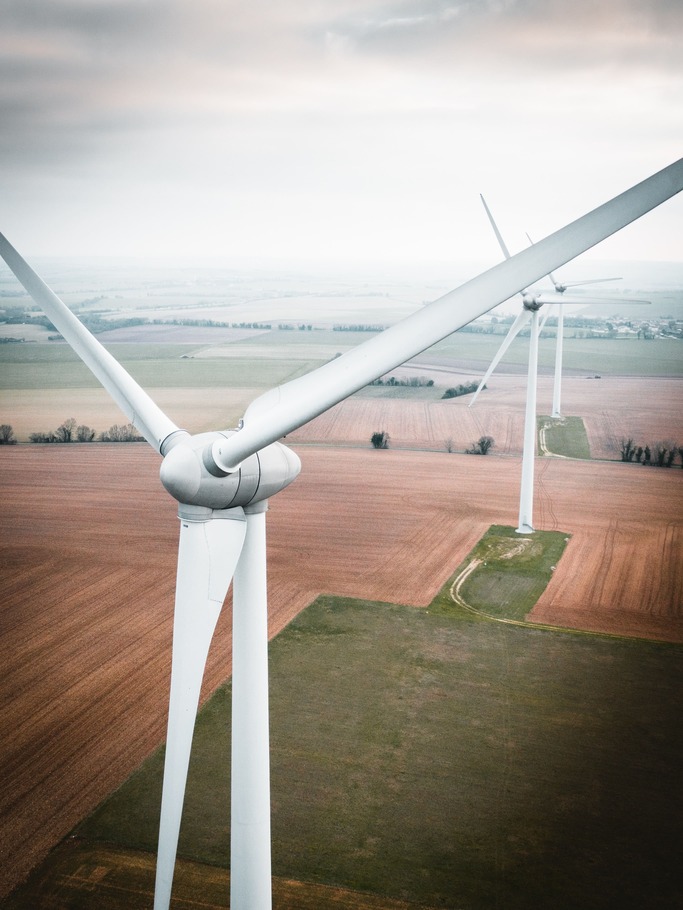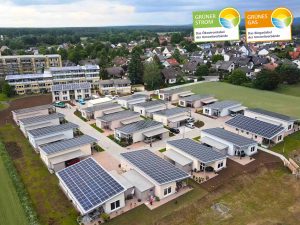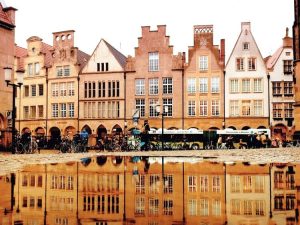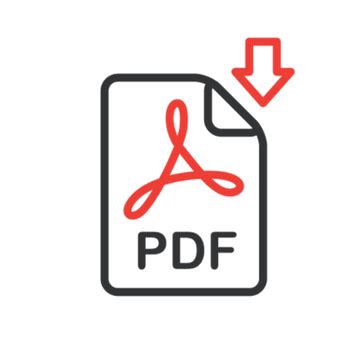FAQ Grünes Gas-Label
What you should know about biogas
Grünes Gas-Label
Frequently asked questions
With Green Gas-certified tariffs, guaranteed investments flow into the expansion of renewable energies.
The level of investment is determined by a fixed amount per kilowatt hour consumed. Thus, your gas purchase indirectly influences the investments in the energy transition. The areas of support include the mobility transition, energy infrastructure, energy efficiency, and other projects that serve the energy transition, such as nature conservation, development cooperation, and education.
You can find the whole range in the criteria catalog for the Grünes Gas-Label.
Green gas
- Biogenic residues (e.g. biowaste from the organic waste garbage can, plant residues, residues from agriculture such as harvest and slaughter waste, liquid manure, slurry and dung).
- Sewage sludge and sewage gases from wastewater treatment plants, industrial processes, or commercial production (e.g., from biogenic residues in paper recycling).
- Renewable raw materials or energy crops (e.g., corn or through-grown silphia).
The abbreviation NawaRo stands for the term renewable raw materials.
This refers to plants or plant components that originate from agricultural production and are not used as food or feed, but are used materially or energetically, e.g. for the production of biogas.
Sewage gas is a methane-containing gas produced during wastewater treatment by the digestion of sewage sludge. Sewage gas contains between 45 and 70 percent methane by volume.
As the name suggests, this is gas that is produced artificially. Gas is produced from water in an electricity-intensive process called electrolysis. This concept is called power-to-gas. In this context, people often talk about green hydrogen. Green' here means that hydrogen is produced with the help of green electricity.
- Biogenic residues (e.g. biowaste from the organic waste garbage can, plant residues, residues from agriculture such as harvest and slaughter waste, liquid manure, slurry and dung).
- Sewage sludge and sewage gases from municipal wastewater treatment plants, industrial processes, or commercial production (e.g., from biogenic residues in paper recycling).
- Renewable raw materials (e.g. maize or through-grown silphia), but only if there is an ecologically sustainable operator concept that is conducive to the energy transition.
Biogas tariffs
Even though the name suggests it, biogas is not automatically an environmentally friendly product. It is true that biogas production is renewable and generally more environmentally friendly than conventional energy from large power plants. However, it can be done very differently from an ecological point of view.
In addition, there are natural gas-only tariffs that do not include biogas and are offered under the name Ökogas or Klimagas. Since the extraction of fossil natural gas releases CO₂, the providers of such tariffs often promise to offset the CO₂ quantity elsewhere.
The Grünes Gas-Label was developed to provide consumers with orientation in the gas market. It stands for biogas produced in an environmentally compatible manner. The Green Gas label is only awarded to gas tariffs in which the production and use of the biogas meet the requirements of a demanding environmental standard. Criteria catalog designed by independent energy experts.
Consumers can thus be sure that at least ten percent of the tariff is made up of environmentally friendly biogas or synthetically produced green gases.
The Grünes Gas-Label creates a double benefit for the energy transition: Purchase of at least ten percent environmentally friendly produced biogas or synthetically produced green gases and guaranteed investments in new plants and innovative energy transition projects. This provides impetus for the environmentally compatible expansion of renewable energies.
The guaranteed investments in the nature-friendly expansion of renewable energies are a key differentiator compared to other biogas tariffs.
Biogas tariffs for end consumers:inside do not exclusively contain upgraded biogas, known as biomethane. Many suppliers offer natural gas with a biogas content of five, ten or 20 percent, but gas tariffs can also consist of 100 % of biogas. Gas tariffs that carry the Green Gas label contain At least ten percent biogas, whose production and use meet the requirements of a demanding Criteria catalog suffice.
Before feeding into the natural gas grid, the Biogas to biomethane prepared become. When it comes out of the fermenter of the biogas plant, the biogas is saturated with water vapor and contains unwanted by-products such as hydrogen sulfide and carbon dioxide. In a multi-stage process, the gas is purified of these by-products as far as possible. This also increases the proportion of methane in the biogas.
Depending on the composition and intended use, different treatment processes are applied. Among other things, biomethane is converted into electricity directly on site in combined heat and power plants, supplied to filling stations as fuel for natural gas vehicles, or fed into the natural gas grid, as is the case with biogas tariffs.
Find out which suppliers offer gas tariffs with the Grünes Gas-Labelor contact your supplier and ask about a biogas tariff with the Grünes Gas-Label. Select a labeled tariff and sign the supply contract of the new supplier. The rest is similar to the electricity switch: The new gas supplier cancels the old contract for you at the next possible date and initiates everything else. Until the transfer, the local or previous supplier is obliged to maintain the gas supply. This means that there will be no interruption in supply.
You can find gas tariffs with the Grünes Gas-Label here.
Note: Individual, named biogas tariffs are always certified, not the supplier itself.
Guaranteed investment in new equipment
With Green Gas-certified tariffs, guaranteed investments flow into the expansion of renewable energies.
The investment amount is determined by a fixed amount per kilowatt hour consumed. Thus, your gas purchases also indirectly influence investments in the energy turnaroundThe funding areas include the mobility transition, energy infrastructure, energy efficiency, and other projects that serve the energy transition, such as nature conservation, development cooperation, and education.
You can find the whole range in the criteria catalog for the Grünes Gas-Label.
In the case of gas tariffs with Grünes Gas-Label. at least 0.2 cents per kilowatt hour consumed invested in the expansion of renewable energies. Many energy providers invest more than 0.2 cents per kilowatt hour. If you want to compare a gas tariff via the tariff portal of the environmental associations, the subsidy component and your energy transition contribution will be displayed for the respective energy provider.
In the construction of new renewable power generation plants, the Grüner Strom Label e.V. defines in many cases Environmental requirements that go beyond what is required by law. This ensures that the subsidies go to plants with the highest environmental standards.
Before subsidies flow into energy transition projects, a concept must be submitted and approved by Grüner Strom Label e.V.. In the catalog of criteria for the Grünes Gas-Label you will find more information about this.
Thanks to the customers of the certified green electricity and biogas tariffs, energy turnaround projects are being implemented on an ongoing basis. On our Germany map all interested parties can see where these plants and projects are located, what their output is, when they were built and by which provider they were funded.
Certification process and certified tariffs
The Grünes Gas-Label is the only biogas label supported by leading civil society organizations. The supporting associations can be found here. Through the work of the sponsoring associations in the board of directors and general meeting, they have played a significant role in shaping the certification to this day. Changes in the label's criteria, for example, must be approved by all the sponsoring associations. . . here .
. .
The Grünes Gas-Label is awarded by Grüner Strom Label e.V., which has been awarding the Grüner Strom-Label for green electricity tariffs since 1998.
The Grünes Gas-Label is used for Biogas tariffs (not for the supplier per se or a specific biogas plant). Thus, tariffs of independent biogas suppliers can receive the label, but also tariffs of municipal utilities that sell conventional natural gas in addition to the certified biogas.
However, companies that are generally negative about renewable energies or operate nuclear power plants themselves do not receive the label.
Energy suppliers who wish to obtain the Grünes Gas-Label for one or more of their tariffs apply for initial certification via forms. If there is nothing against a certification, the GSL e.V. and the supplier conclude a Label agreement The provider then undertakes to comply with the criteria. The label is then issued and the tariff can be sold. You can find more information about the initial certification here.
The biogas suppliers contractually commit to keeping their certified tariffs Review each calendar year to let. The verification is carried out by a independent, renowned institute, which presents the results in a Expert opinion compiled. The GSL e.V. then decides whether the label is extended and what conditions, if any, are associated with it.
For utilities that wish to receive the Grünes Gas-Label for their tariff, there are annual fees: an effort-based Certification fee, which is charged for the preparation of the expert opinions, and a Label fee, the amount of which depends on the sales of the certified tariff.
The label fee finances the office of the Grüner Strom Label e.V.. It acts as an interface between the electricity suppliers and the association's committees, supports the certification process, advises consumers and electricity suppliers, and carries out general public relations work for Grüner Strom Label e.V..
Biogas supplier with Grünes Gas-Label
You can find all the energy suppliers that offer certified biogas hereAmong them are several nationwide providers as well as local and regional energy suppliers. In our tariff portal of the environmental associations for switching energy providers. you can find all tariffs and easily switch to a real biogas tariff with Grünes Gas-Label.
Companies that are themselves Nuclear Power Plants or are directly involved in such, can adjust their gas tariffs to the do not certify with the Grünes Gas-Label let
In addition, the Grünes Gas-Label will not be issued to any company that still has a direct interest in a coal-fired power plant as of the reporting date of Jan. 1, 2027i.e. operates a coal-fired power plant itself or has a stake in an operating company with share capital/share capital.
The aforementioned requirements for the energy provider (no participation in coal-fired and nuclear power plants) also apply equally to direct parent companies that have a stake of more than 50 percent in the label recipient, as well as direct subsidiaries in which the label recipient has a stake of more than 50 percent.
When an energy provider goes bankrupt, the end customers affected usually revert to the basic supply of the local municipal utility - so electricity and gas continue to flow.
The Grüner Strom Label e.V. requests the energy provider to inform its customers about such a change. As a rule, customers also receive information from their local basic supplier.
This is what we have achieved together
By choosing a certified green electricity or biogas tariff, you are directly supporting the energy transition. For every kilowatt hour consumed, a fixed amount goes toward the expansion of renewable energies - that's sustainable thinking.
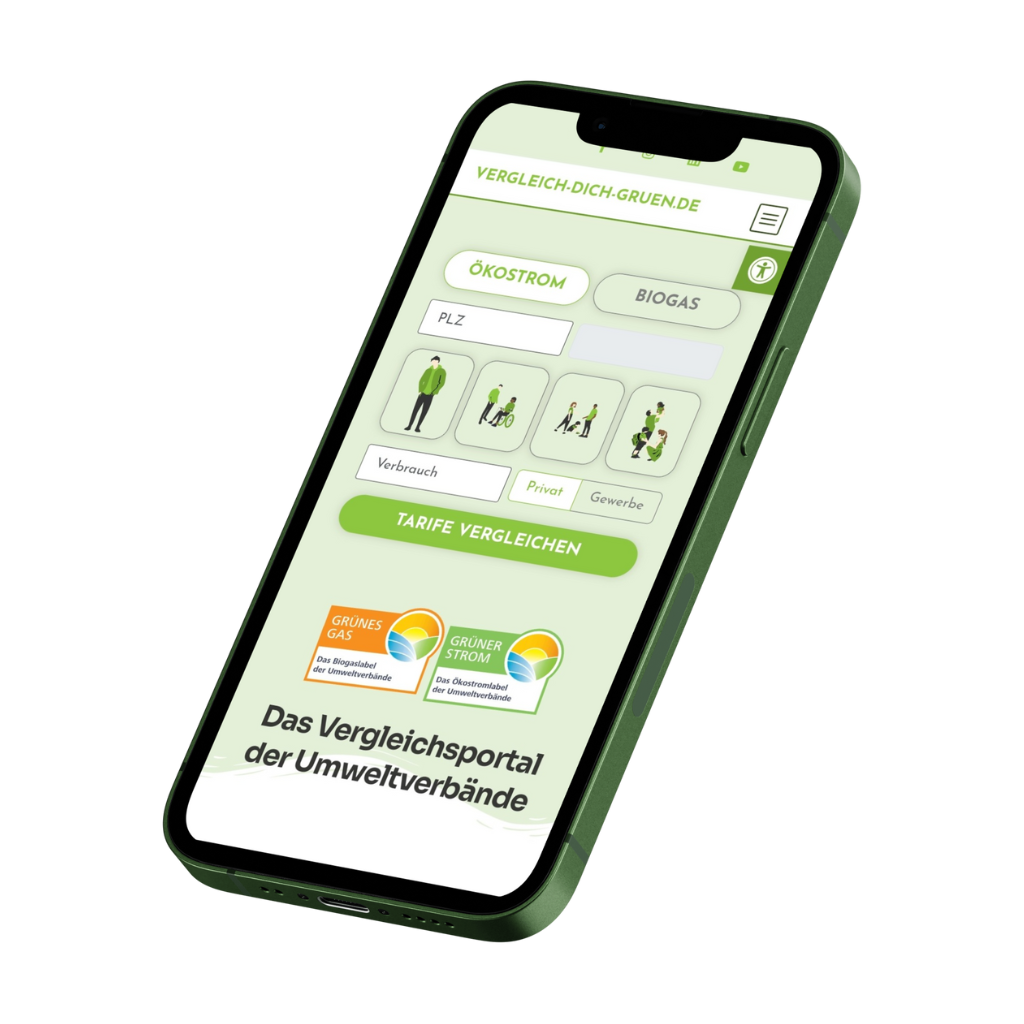
Switch to a certified electricity or biogas tariff now
There are already several online comparison portals for electricity and gas rates. So what's the point of another one?
At the comparison portal of the environmental associations, consumers can compare high-quality and exclusively certified green electricity and biogas tariffs.
"vergleich-dich-gruen.de" offers you the opportunity to actively participate in an energy transition that is nature-friendly, decentralized, citizen-oriented, public welfare-oriented, fair and pollutant-free through your purchase decision.
Stay up to date
Sign up for our newsletter
Grüner Strom Label e.V. | Kaiserstrasse 113 | 53113 Bonn | Germany
Tel: +49 (0)228 / 522 611-90 | E-Mail: info@gruenerstromlabel.de
Want to learn more?
Then feel free to contact us and follow us on social media.
